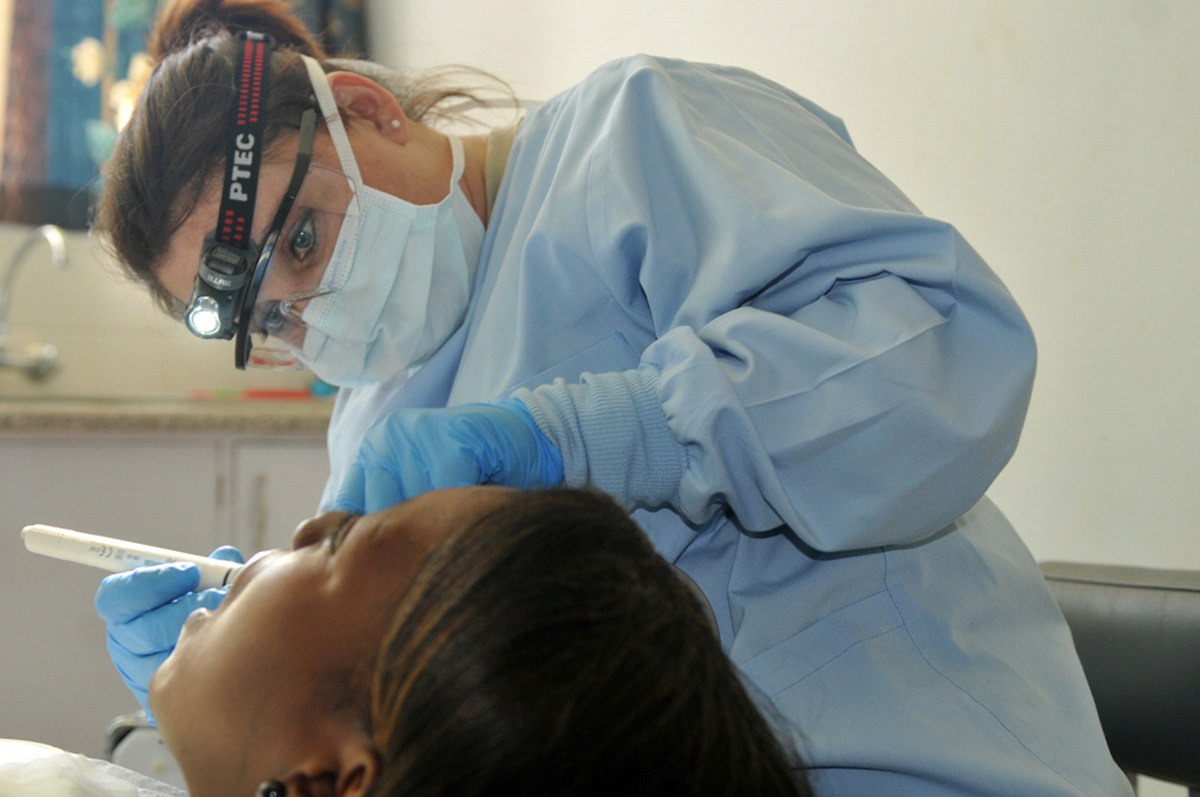Periodontal disease is extremely common around the world — in fact, it is much more common than tooth decay or any other form of dental affliction. It is, however, often detected quite late in its progression, at a time when the only option remaining is the extraction of affected tooth. This is because periodontal disease does not cause pain. Situations that arise from periodontal disease can lead to pain, but the disease process itself is not painful. It is quite likely that the first time people discover they have some form of periodontal disease is when their teeth start becoming mobile or drift away from their physiological positions.

One of the treatment modalities that doctors will put in front of you for the treatment of moderate to advanced periodontitis is gum surgery. This article will look at the reasons why you might need surgery, the various available options and the benefits you will have from these procedures.
Who Needs Periodontal Surgery?
Not every patient needs periodontal surgery. In fact, every patient will first be put on a course of non-surgical treatment and then evaluated after a couple of months to see how well that patient is responding.
Typically, "pockets" that act as niches for pathogenic bacteria form around the teeth. These periodontal pockets are formed at the expense of supporting structures of the teeth, including the alveolar bone. As the pathogenic bacteria continue to release harmful substances in this micro-ecosystem, the bone becomes increasingly damaged, eventually unable to support the tooth — which then needs to be extracted.
Non-surgical therapy involves scaling and root planning which will attempt to mechanically disturb this ecosystem by removing all the plaque, calculus and diseased cementum from the surface of the tooth and its roots.
If successful, this will allow the normal healthy bacterial population to thrive and recolonize the surface of the teeth, resulting in a decrease in pocket depth. Now this reduction in bacterial depth may not occur at every affected site in the mouth equally or even at all. The dentist has to evaluate the conditions of the gums and the teeth. If the patient is able to remove plaque from the area sufficiently to prevent periodontal disease from recurring, then there is no need for surgery. However if the patient is unable to maintain proper hygiene due to persistent difficult to reach periodontal pockets, periodontal surgery is advised.
See Also: What To Expect From Dental Implant Surgery
Another patient who will not be advised periodontal surgery is a patient with advanced periodontitis where surgery will be unable to achieve a significant improvement. A patient who is unable or unwilling to maintain proper oral hygiene for any reason is not a good candidate for periodontal surgery as maintenance is as important as the actual procedure.
Aim And Outcome Of Periodontal Surgery
What Is the Aim Of Periodontal Surgery?
The first and foremost aim of periodontal surgery is to provide the doctor adequate access and visibility so that all the disease-causing factors can be eliminated. This is achieved by making incisions in the base of the gingival sulcus till the crest of the alveolar bone and then reflecting the gingival to uncover the underlying root surface and the supporting alveolar bone.

Any sign of plaque and calculus is removed at this stage using specially designed curettes. If a bone defect is seen which can be amended by the use of bone graft, membranes or a combination of the two then it will be done so. Any defects such as a furcation involvement or a vertical groove extending into the subgingival area which is acting as a plaque retentive factor will be corrected as well.
Types Of Periodontal Surgery
Many minute differences in surgical techniques separate one procedure from another, however from the viewpoint of a patient these surgical procedures can be divided into two basic categories:
- Pocket Reduction Surgeries
- Periodontal Plastic Surgeries
The first category includes everything that is done to reduce the periodontal pockets harboring pathogenic bacteria, while the other includes surgeries that are carried out to improve the aesthetics of a dentition. Some surgeries, like those carried out in gingival enlargement cases, can achieve both purposes at the same time.
Along with the formation of pockets, the other most common presentation of periodontal disease is the occurrence of recession. This makes the teeth look unsightly, exposes the underlying root surface to the oral environment, causes sensitivity and makes the patients more prone to root caries.
These periodontal plastic surgeries include the repositioning of gingival, use of gingival and connective tissue grafts as well as allogenic grafts to achieve root coverage. These surgeries have a higher rate of failure as compared to pocket reduction surgeries as they are extremely technique-sensitive. Successful results can, however, be transformatory for the patient's smile.
Successful Outcomes Of Periodontal Surgery
An establishment of a dentition that is free from disease as well as easily maintainable by the patient would be considered a successful outcome. The benefits from the patient’s point of view would be an increase in the life span of the remaining teeth (by years or even decades in some cases), reduction of mobility, halitosis and bleeding from the gums.
See Also: Dental Tourism: What, Why, And Where
There are also documented benefits of periodontal treatment on other systemic diseases such as Diabetes, Heart Disease and even help avoiding complications during Pregnancy.
- Photo courtesy of US Army Africa via Flickr: www.flickr.com/photos/usarmyafrica/5725063775
- 1. https://www.perio.org/consumer/treatments-procedures
- 2. http://www.colgate.com/en/us/oc/oral-health/conditions/gum-disease/article/gum-surgery-what-do-i-need-to-know
- 3. http://www.webmd.com/oral-health/guide/gum-disease-treatments


Your thoughts on this